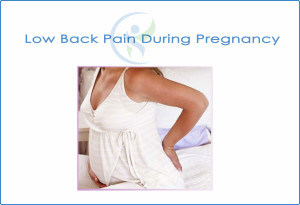Low Back Pain During Pregnancy
Low back pain is a common and uncomfortable side effect of pregnancy. However, there is no reason to allow back pain to interfere with your daily activities, interrupt your work, or prevent you from getting restful sleep.
What Causes Pregnancy-Related Low Back Pain?
The change in hormone activity during pregnancy prepares the body for birth by loosening joints and ligaments that support your pelvis and your spine. Pain can result from over use of spinal muscles compensating for this lack of support. Additionally,the increased abdominal weight that a woman carries during pregnancy can cause her to adjust her posture to counter act the effects of gravity, placing increased pressure on the lower back. Pain may be felt only in the back or may radiate into the buttocks,hip, groin,or legs.
How a Physical Therapist Can Help
As an expert in restoring and improving motion in people’s lives, a physical therapist can evaluate and design a plan of care to meet your specific needs. Your physical therapist will consider your medical history,your trimester (as it relates to the changes in your body), and your prior level of activity.Your plan of care may include:
- Recommendations for sleeping positions.
- Recommendations for modifying daily activities.
- Deep tissue mobilization to reduce muscular pain.
- Spinal or pelvic joint mobilization or stabilization.
- Exercises to help postural alignment and body balance.
- Exercises to improve strength, mobility,and flexibility.
- Braces for support of the lower back and abdomen.
- Recommendations for fitness and maintaining an exercise program throughout pregnancy.
- Recommendations for techniques or positioning during delivery to reduce strain on the low back.
- Follow-up evaluation and treatment after delivery for instruction in exercises to restore strength to compromised muscles.
Find a physical therapist in your area at www.moveforwardpt.com
Acknowledgment: The Section on Women’s Health,
American Physical Therapy Association
All contents ©2011, 2010 American Physical Therapy Association. All rights reserved

